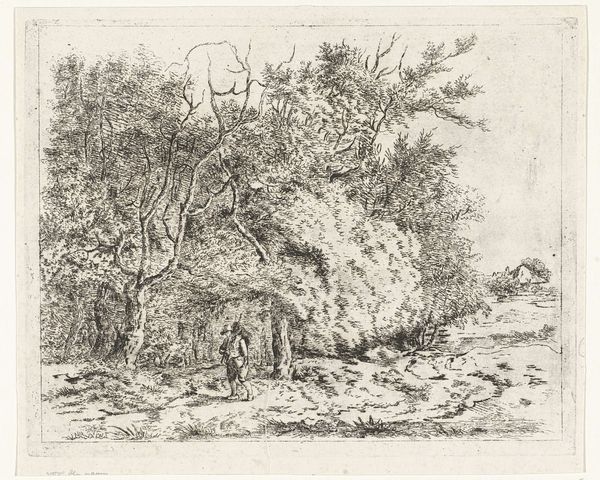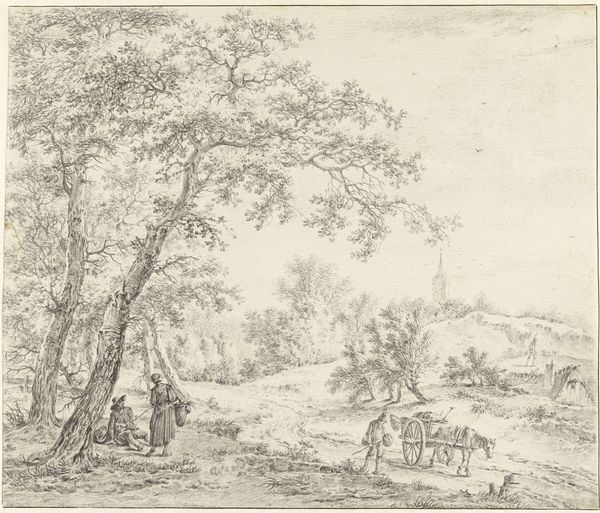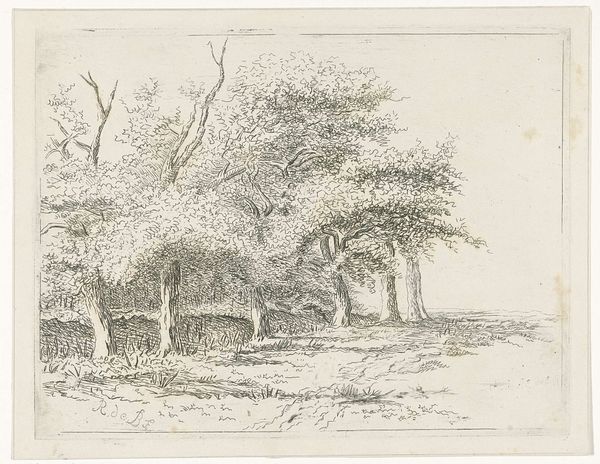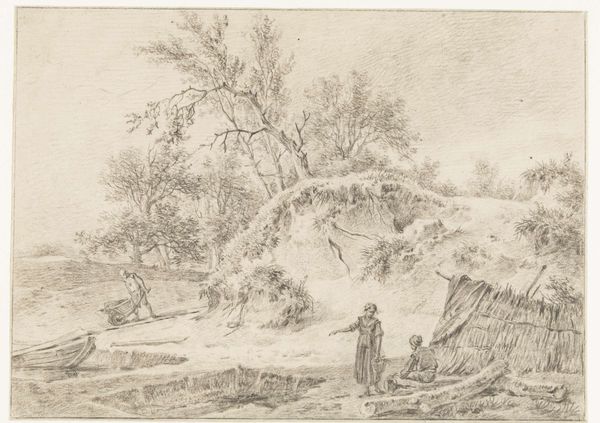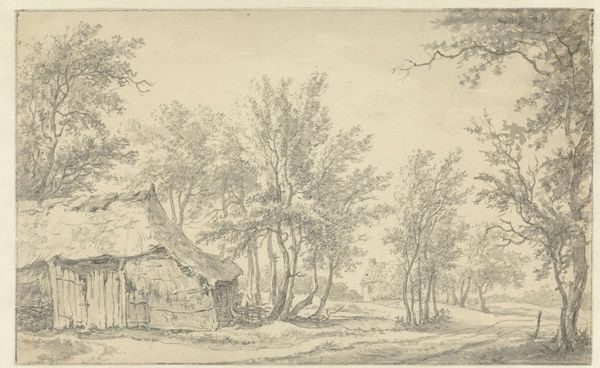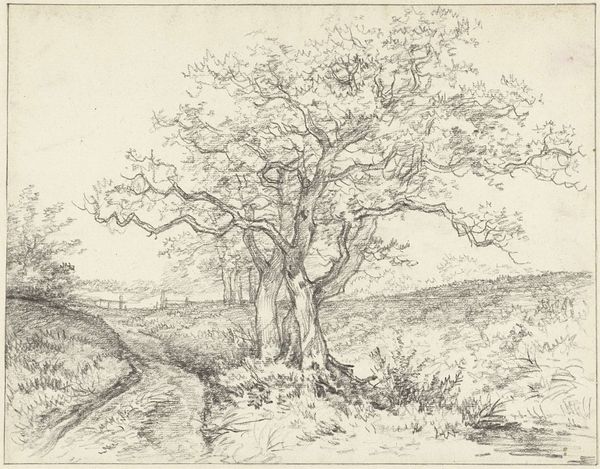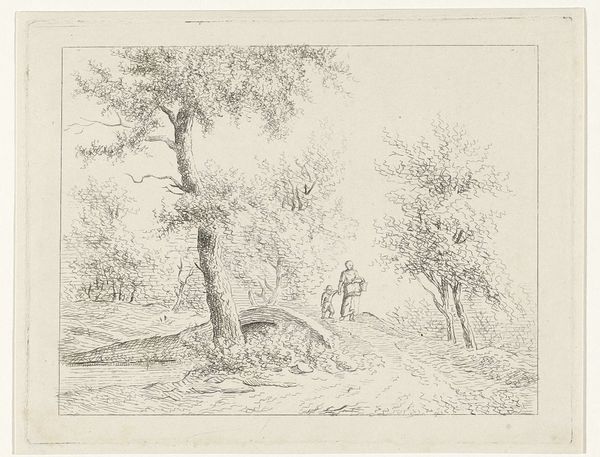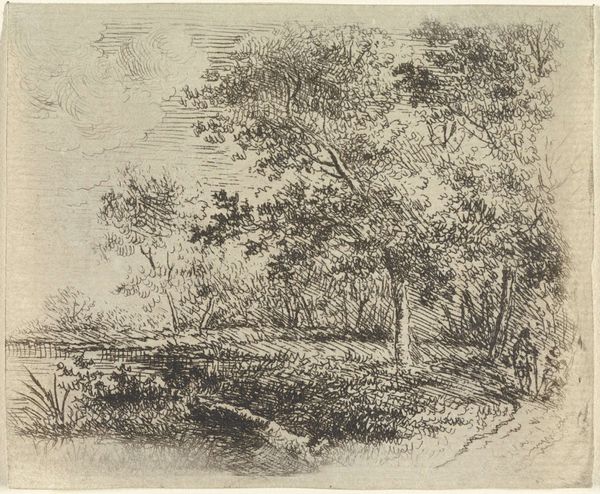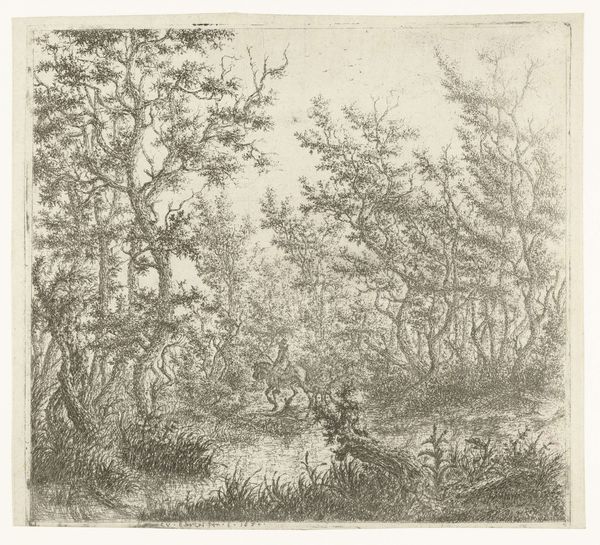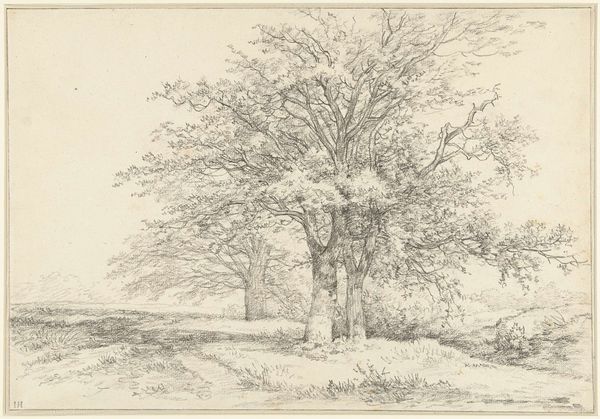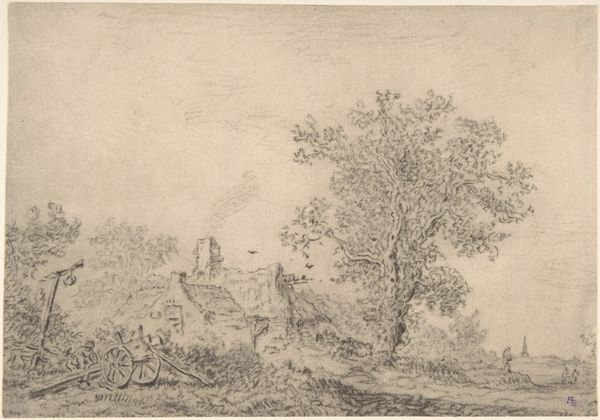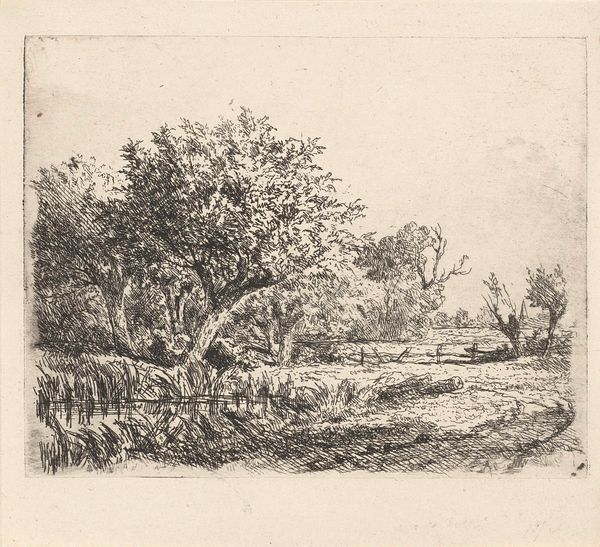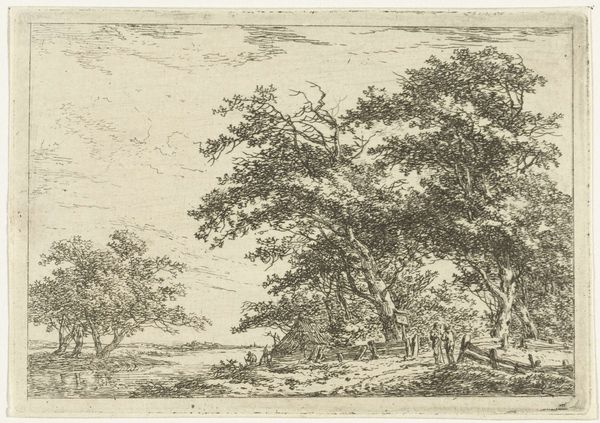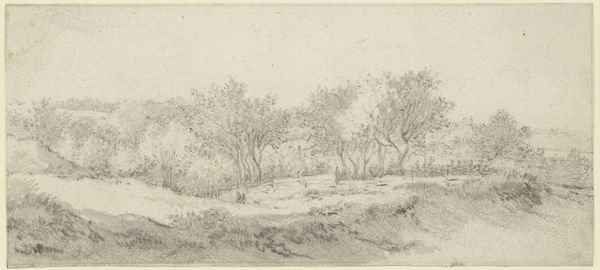
print, etching
# print
#
etching
#
landscape
#
romanticism
#
line
#
realism
Dimensions: height 191 mm, width 246 mm
Copyright: Rijks Museum: Open Domain
This etching, "Wandelaar langs de bosrand," or "Wanderer Along the Edge of the Forest," was created by Reinierus Albertus Ludovicus baron van Isendoorn à Blois, a Dutch aristocrat. Born in the late 18th century, the Baron lived through the transformation of Europe during and after the Napoleonic Wars. The figure of the wanderer invites us to consider the concept of landscape as more than just a visual scene. During the Romantic era, nature was a space for contemplation, but also a reflection of social class and power. The lone wanderer, a figure often associated with Romanticism, seeks solace in nature, yet his presence also subtly underscores the relationship between humanity and the environment. What does it mean for a member of the aristocracy to depict a scene of natural simplicity? Does this choice reflect a genuine appreciation for nature, or is it an assertion of ownership and control over the land? This image prompts us to think about how our understanding of nature is always shaped by our social and personal histories.
Comments
No comments
Be the first to comment and join the conversation on the ultimate creative platform.
